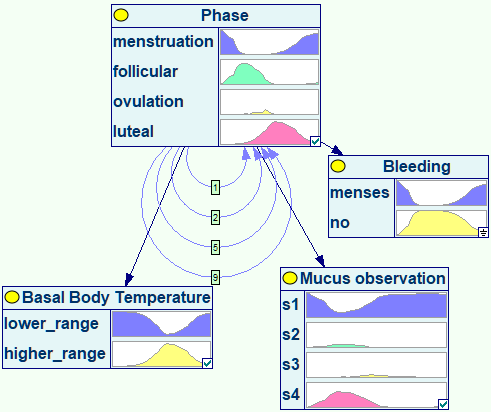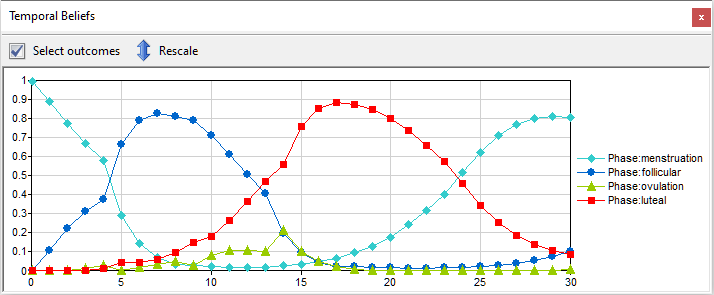DBN, as implemented in GeNIe, allow for temporal arcs of any order, which means that DBNs in GeNIe can model dynamic processes of any order. This, to our knowledge, is unique among graphical modeling software.
The following example of a DBN originates from the doctoral research conducted by Dr. Anna Lupinska-Dubicka (2014) and is available from BayesFusion's interactive on-line model repository. It models woman's monthly cycle and helps with predicting the day of ovulation, with applications to fertility awareness and difficulties with conception.

Woman's monthly cycle is a dynamic system with memory spanning of the period of typically 28 days (it varies among women and for the woman modeled the the above model, it is 30). It means that to model it correctly, one has to relax the Markovian assumption that the current state of the system is determined only the state of the system one step back. On the first day of the monthly cycle (typically, it is the first day of the monthly bleeding), it is more or less known when ovulation will happen and when the cycle will end (this is by definition the last day before the next monthly bleeding). The above model uses influences of the 1st, 2nd, 5th, and 9th order, which turned out to be sufficient to model transitions between the four phases of the monthly cycle and to predict both ovulation and the end of the cycle.
The following plot, derived in GeNIe, shows the probability distribution over the states of the variable Phase as a function of time. The only evidence entered into the network is bleeding (menses) on Day zero. The plot resembles qualitatively typical plots of concentrations of various hormones in woman's body, indicative of the current phase of the cycle.
